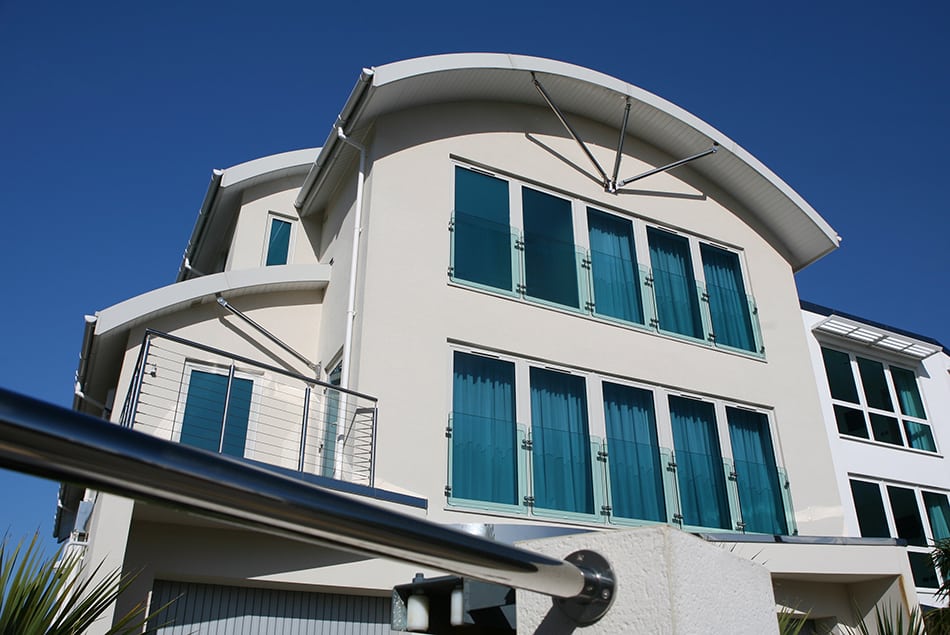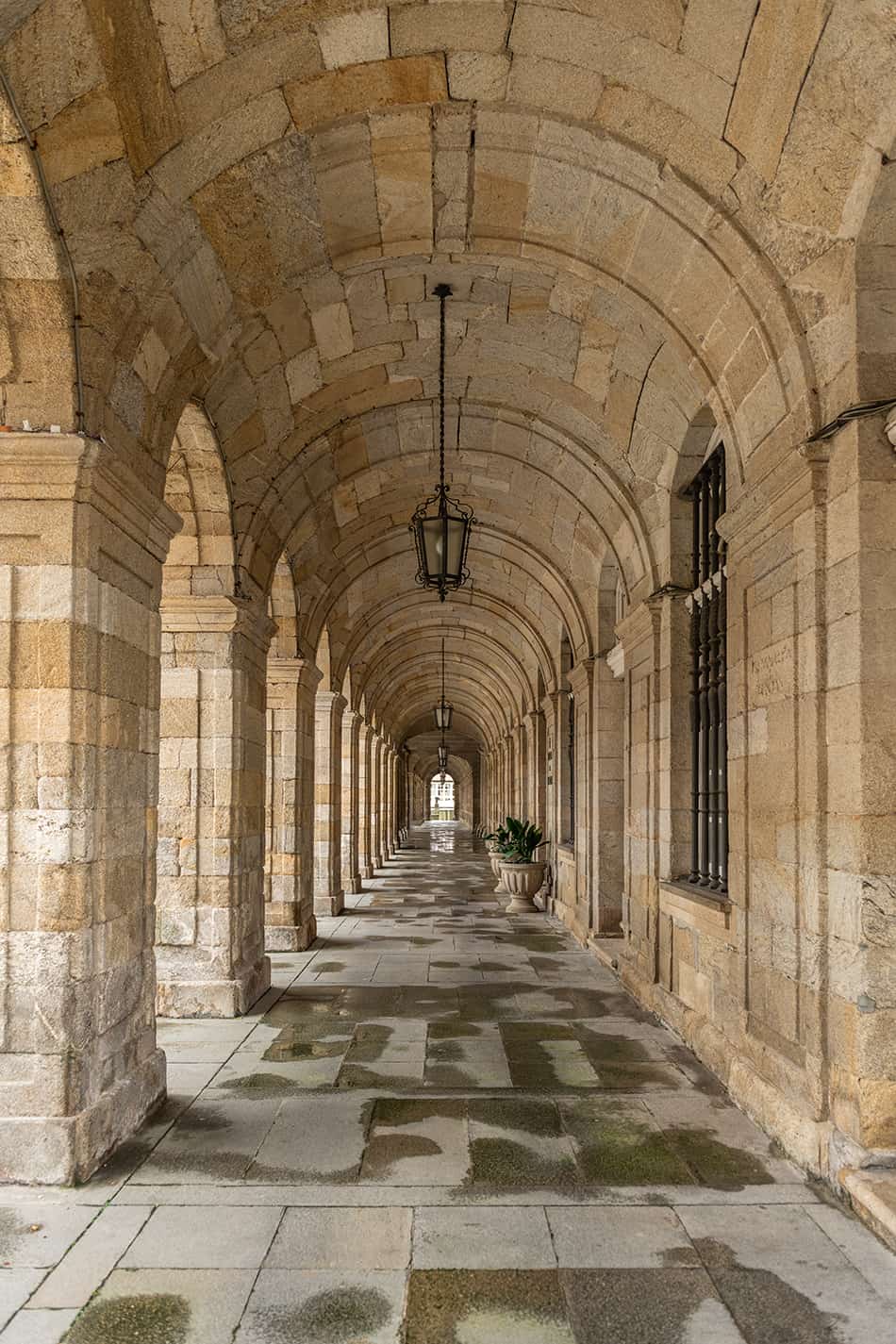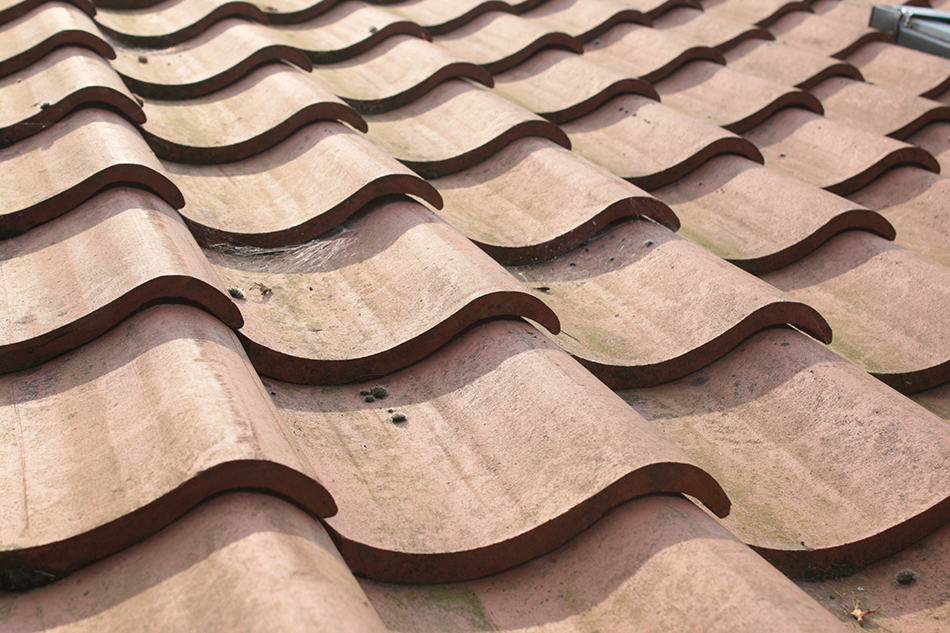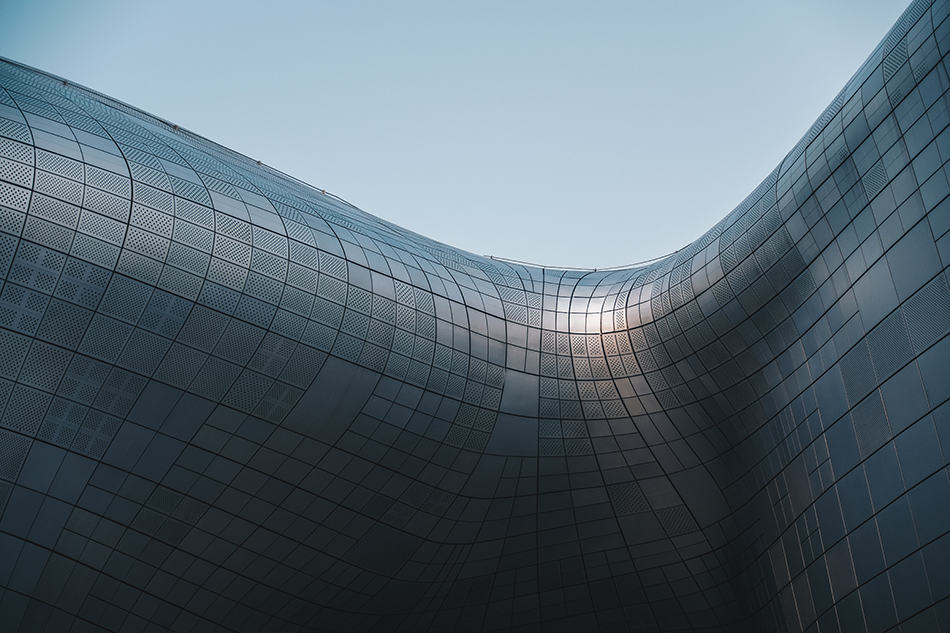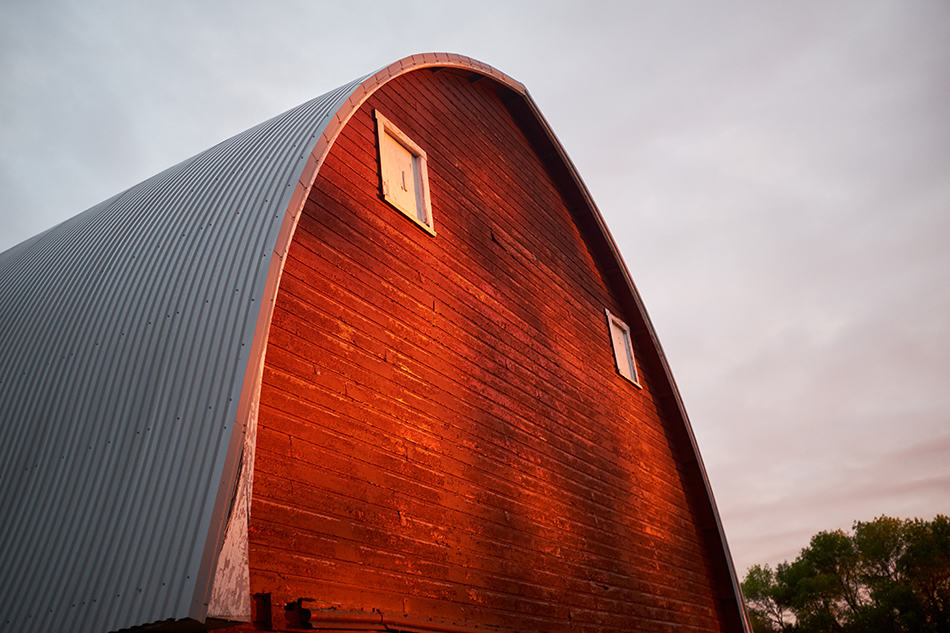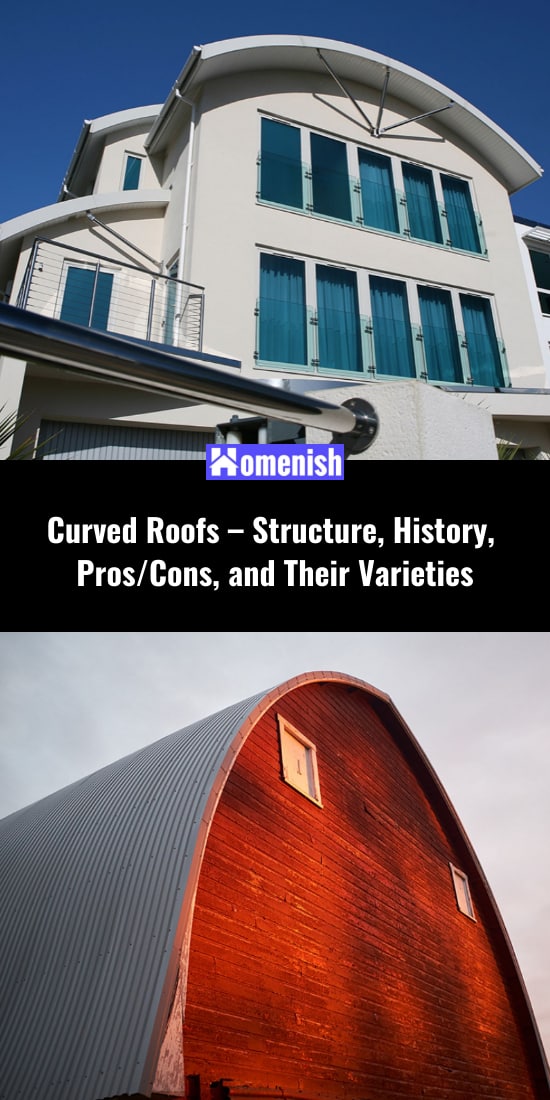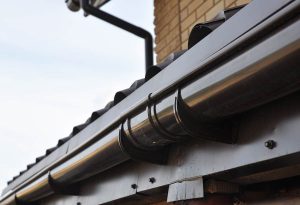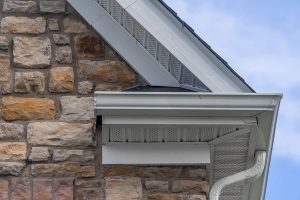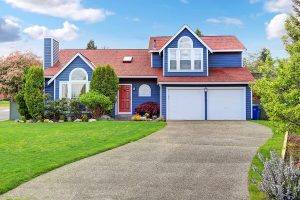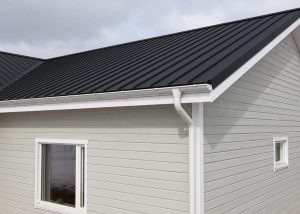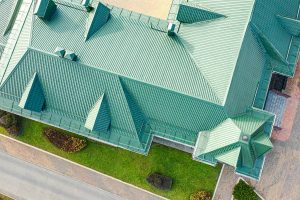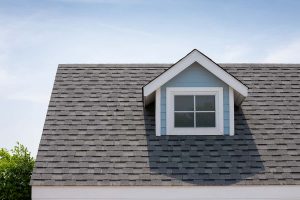Curved roof systems can come in various designs, with the entire or partial parts of the roof having curved elements. They can be constructed of almost any roof materials, including shingle and tile, but in most modern builds, curved roofs are being made from sheets of metal due to their pliability, low cost, and ease of installation.
Identifying Structure
Curved roofs are easy to identify at a glance because they have giveaway curved components. Traditionally a curved roof will take the shape of a dome or a half-sphere, but in more modern builds, architects have incorporated curved elements on flat roofs, or created unusual or asymmetric curves, to give a gentle wave shape. Types of curved roofs you may be familiar with include:
Barn Roofs
Barn roofs with rounded edges were popularized in the 1920s. They were designed in an attempt to maximize space in the barn so that the farmer could store more hay in the loft space. When looked at from the front, these barn roofs look like the top portion of an egg, with curved, bloated sides that join at the peak to almost form a point, but not quite. This is a style of roof that worked so effectively that it is still commonly seen on barn buildings across North America, with a high proportion being in the US Midwest.
Iconic Roofs
While there are functional benefits to building curved roofs, oftentimes, architects have designed buildings with curved roofs to help them to stand out from the norm. Famous buildings with curved roofs that have become iconic include the Sydney Opera House in Australia, the Taj Mahal in India, and the United States Capitol Building in Washington DC, USA.
History
Curved roofs are considered to be quite a modern design style, as they are very different looking compared to angular pitched roofs that we are used to seeing. Curved roofs have been implemented into contemporary builds over recent years to give an organic look to the building and have therefore become associated with modern architectural innovation.
However, curved roofs have been used throughout history for millions of years. There are examples of the original curved roof, the dome, in many historical eras, including in Ancient Persia, Ancient China, and Roman times. There is also evidence of dome buildings in Europe that date back to the middle ages.
Pros of Curved Roofs
Aesthetic Appeal
Curved roofs have an aesthetic appeal that gives modern buildings an organic look and help them to blend in more seamlessly with their surroundings. They are visually less chunky and angular, which allows them to work well with certain design styles.
Improved Wind Resistance
Curved roofs offer less resistance against the wind and are more aerodynamic when compared with traditional pitched roofs. This might be particularly beneficial in coastal regions that experience high winds or areas which are prone to storms and inclement weather.
Less Wasted Space
Curved roofs also offer great functionality, with one of their key benefits being that they waste less space. In traditional pitched roofs, there is a lot of unused space in the peak of the roof, which cannot be used, but with a curved roof, this is not an issue.
Floors can also be built higher up in the house because a curved roof offers better ceiling height without the addition of a wasted peak. The wasted space in pitched roofs can also increase running costs because each year, the homeowner pays to heat their entire home, with lots of heat escaping into the attic and being wasted. With a curved roof, there is less space to heat, which can reduce heating costs.
Maximize Natural Light
Curved roofs can come in various shapes and sizes, and you can angle the curve to suit the positioning of your home in order to make the most of natural light. In doing this, you can create a more light and airy building and also reduce energy usage.
Adhere to Height Restrictions
If you are building a home that needs to comply with height restrictions in the building code and regulations, then a curved roof can help to ensure that you fulfill this need. Curved roofs can be much more shallow than traditional pitched roofs, and so if you are tight on space in terms of height, then opting for a curved roof could be the solution. A curved roof gives you more space to work with in your home so that you are able to have several stories in the building while still adhering to the height restrictions.
Cons of Curved Roofs
Potentially Higher Cost
Buying a home with a curved roof is likely to cost more than a traditional style home because it will typically be a unique build as opposed to a generic build and therefore come with a higher price tag.
However, if you are building a home, then it is quite possible to opt for a curved roof, which will cost in the same region as a standard roof because the materials required to build a curved roof can be sourced inexpensively. The finish you choose for your curved roof will have a large effect on the cost, but the cost of labor for an architect to design the roof and a builder to construct the roof should also be factored in.
May Require Specialist Builders
Depending on the design of your curved roof, you may find that you need to locate specialist builders who are experienced in constructing these types of roofs. Many building firms will be able to tackle unusual building plans, but if you want to increase the chances of your roof being installed without any issues, then using a company that has built curved roofs before is a good idea. A curved roof should not take any longer to construct than a traditional roof, and in many cases, may even be quicker, and therefore the labor cost associated with your curved roof construction should be any higher than a standard roof build.
Types of Curved Roofs
If you are considering a curved roof for your building, then there are numerous ways you can incorporate curves into the design of the roof. These include:
Cranked Ridge Roof
This type of roof has a very similar silhouette to a traditional pitched roof, as it has two flat sides that join to form a peek at the top. However, instead of joining to form a pointed angle, the two sides are joined by a curve, giving the roof a rounded peak. This type of curved roof gives the roof a softer look than that of a harsh angle.
Barrel Vaulted Roof
This is the most common of all types of curved roofs and is also known as a convexly curved roof. It has a consistent curved shape that gives a building the look of having a symmetrically rounded roof.
S-Shaped Panels
Roof panels can be sourced in the shape of an’S’, which uses both convex and concave curves. These panels are typically used in buildings that have a focus on aesthetic by designers who want to push the boundaries of traditional architecture. While these types of curved roofs typically offer limited functional benefits, they do offer a very unique visual.
Elliptical and Freeform Curved Panels
For a truly unique roof design, roof panels can be made in almost any curved shape and angle to bring an architect’s idea to life. These types of curved panels can have soft curves, extreme curves, or multiple curves to give the effect of waves.
Bullnose Roof
A bullnose roof takes the form of a more traditional roof, but with a rounded bottom edge. The curved component of the roof is like a fascia, which seamlessly joins the roof to the sidewalls of the building. These types of roofs are generally selected for their ornamental appeal and offer little in the way of improved functionality compared with a standard roof. They do succeed in adding some visual interest to a building.
Gothic Arched Roof
A gothic arch is an arch formed by two curved sides that meet at the peak to form a point. This type of roof can often be seen on gothic style cathedrals and churches, but it is also a style that can be incorporated into modern curved roof designs.
How Durable are Curved Roofs?
Curved roofs are just as durable and long-lasting as traditional roofs. The strength of the roof will depend on many factors, but most notably the construction material chosen. Many curved roofs are made from metal sheeting, which is renowned for its durability, and will be well suited to stand the test of time.
Curved roofs can also be made with timber and wooden shingles. Wooden curved roofs are very durable, and if you opt for a wooden shingle that is resistant to moisture and rot, such as teak, then these will remain in good condition for a lifetime. Shingles should also be treated to ensure durability.
